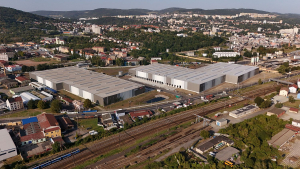
The latest Savills report highlights Poland as an emerging logistics powerhouse, particularly considering recent geopolitical and economic changes. With its strategic location and rapidly expanding infrastructure, Poland is becoming a logistics and production hub for markets in Western Europe and Scandinavia, attracting investors and global corporations that are diversifying risk and shifting operations from Asia to Europe.
Economic growth and consumer demand
Since 1990, Poland has recorded the fastest GDP growth among OECD countries, alongside a 31.2% increase in household income over the past decade. By comparison, the EU average stood at just 5.5%. This has driven a 46% increase in consumer demand in Poland over the last ten years. The report projects that this trend will continue, with a forecasted further growth of 13% by 2029. Particularly notable is the e-commerce sector, which reached an 8.7% share of retail sales in 2024 and is expected to grow to 23%, fuelling demand for warehousing space. Due to the high growth potential of online retail, along with Poland’s strategic location and excellent transport infrastructure, the country has been chosen as a key location for Western European and Scandinavian markets by companies such as Amazon, Zalando, Shein, and VidaXL.
Infrastructure and transport efficiency
Significant EU funding – totalling €229 billion over the years 2007–2027 – has enabled the development of road, rail, and port infrastructure. Poland boasts an extensive road network. The Port of Gdańsk handled over 79.6 million tonnes of cargo in 2023, marking a 26.1% increase from 2022 and establishing it as a key logistics hub in the Baltic Sea region.
“Poland’s strategic location and modern road infrastructure make it the ‘centre of gravity’—an optimal point for a logistics facility serving Western, Central and Eastern Europe, Scandinavia, and the Baltic countries”, notes Katarzyna Pyś-Fabiańczyk, Director, Head of Industrial Services Hub at Savills.
Geographical proximity and low labour costs
Poland has become an attractive alternative for Western European companies due to its competitive labour costs, averaging €14.5 per hour, which is 54% lower than the EU average. In the last three years, Poland has seen an average inflow of Foreign Direct Investment (FDI) equivalent to 3.8% of GDP, significantly surpassing the European average of just 0.2%. These investments are mainly focused in the manufacturing sector, accounting for 33.1% of total expenditure.
Growing demand for warehousing space
In terms of demand size, Poland’s warehousing market has consistently ranked within the top four in Europe, often outpacing countries like France, Spain, and even the United Kingdom. In 2023, logistics leasing reached 3.37 million s qm, a year-on-year decrease of 25%, yet this figure was 31% higher than the pre-pandemic average, indicating stable sector growth. The first half of 2024 saw a significant rebound in demand, with a 19% increase compared to the same period in the previous year. With stable rents, ranging from €54 per sqm per year in Central Poland to €60 per sqm in the Warsaw II zone, Poland remains a competitive logistics market.
Imminent land market restructuring
Planned changes in the Spatial Planning Act, set to take effect in 2026, include the introduction of general plans that designate industrial and service zones, which may limit the supply of new land for logistics development. These changes will create more predictable conditions for investors, while also driving optimisation of existing warehouse assets.
“We still maintain an advantage over neighbouring Central European countries in terms of land availability for new manufacturing investments, particularly within Special Economic Zones. However, the number of plots prepared for logistics parks in key transport hub regions is diminishing. This particularly applies to areas around Warsaw and Kraków, as well as Gdańsk/Gdynia (Tricity), where transaction prices are the highest in the country”, adds Rafał Bochenek, Land Acquisition Manager, Industrial Agency.
The growing interest in Poland as a logistics hub in Europe stems from its proximity to Western markets, increasing domestic consumption, and stable, competitive operating costs. It is anticipated that the country will remain one of the leading growth markets for the logistics sector, especially in the face of the rising nearshoring trend across Europe.



